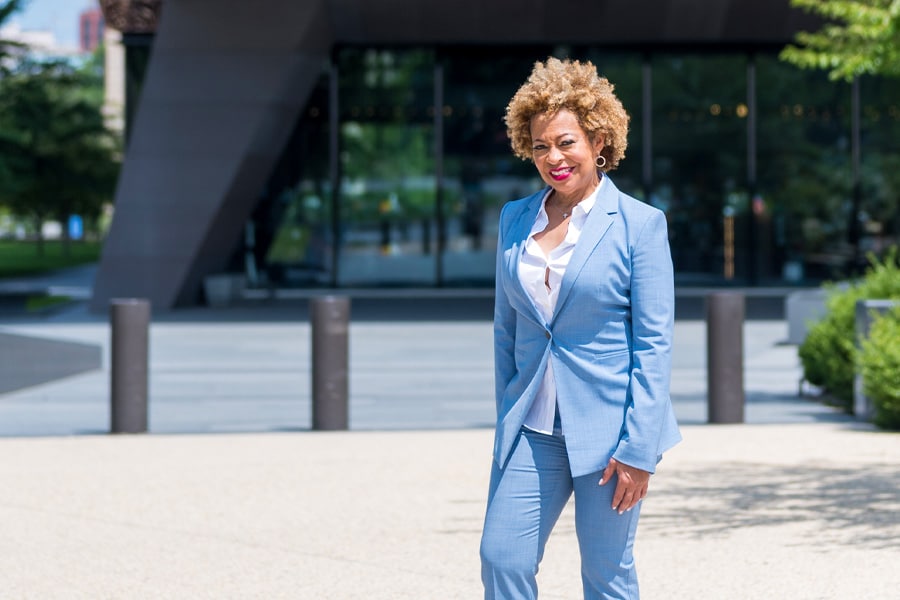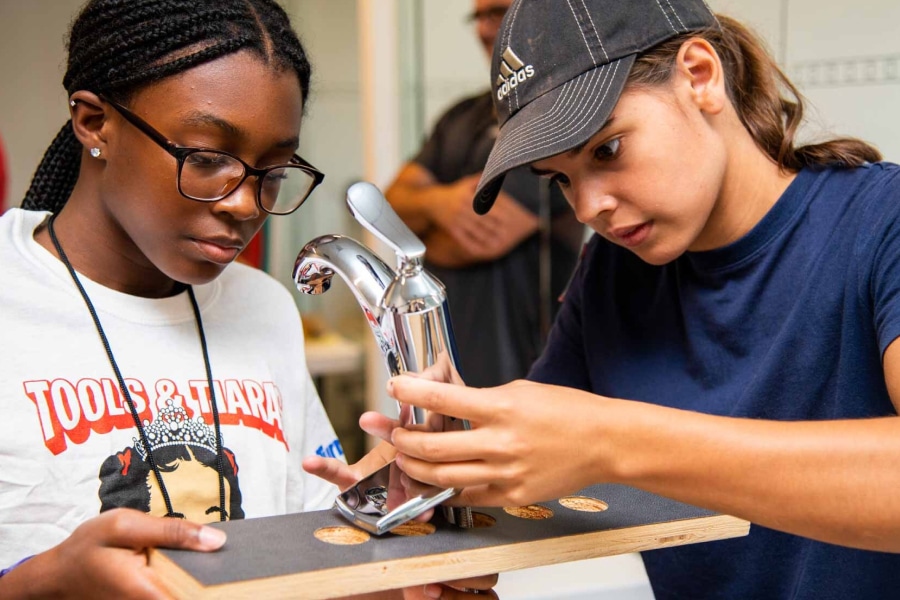Deryl McKissack was named a “Black Business Icon” at the 2021 BET Soul Train Awards, one of many awards she’s received over her career. She founded the architecture, engineering and construction management firm McKissack & McKissack more than 30 years ago. Her family’s experience in architecture, engineering and construction stretches back to the late 18th century, when her great-great-grandfather Moses McKissack, an enslaved West African, worked as a brickmaker. There have been McKissacks in the construction and architect industry in every generation since.
Her grandfather and great-uncle started in the skilled trades and founded a construction company, becoming registered architects in 1922. One of their largest projects was a $5.7 million contract designing and building the Alabama airbase where the Tuskegee Airmen trained. Awarded in 1942, it was the largest federal contract ever granted to a Black-owned company at the time.
McKissack and her twin sister, Cheryl, both got their first architecture and construction industry experience as kids working at that firm, by then run by their father. At 12 years old, McKissack had mastered architectural lettering, was drafting architectural drawings and producing window-and-door schedules for clients. McKissack later graduated from Howard University with a B.S. in engineering.
When she founded McKissack & McKissack, her first mission for the company was informed by what she learned working for her father. “When I started the company, watching how my father worked with his clients, our mission was to build trustworthy relationships and be trustworthy partners with our clients,” McKissack said. “We knew if they could rely on us, they would come back to us.”
That core vision has developed over the past three decades, helping fuel the growth of McKissack & McKissack, which today has seven offices across the United States and a working portfolio of $15 billion in projects.
Broadening the company vision outwards
As the firm became more established, McKissack guided its growth with a new vision. As she describes it: “Our mission changed to enhancing people’s lives through the design and construction industry, so our projects changed. We wanted to work on projects where we could see how we’re making people’s lives better.”
For McKissack, that meant turning to education. The firm had already worked on many higher education projects, but McKissack had an experience that turned her attention to K-12 schools. Invited to give a speech at Ballou High School in Washington, D.C., she was shocked by how run-down the facilities were—with sinks and toilets torn off the walls, mildew growing and poor climate control.
At the time, McKissack & McKissack had completed several prison projects, and McKissack noted the prisons had better bathrooms and conditions than this local high school. It was then she decided to shift the firm’s mission. “We’ve got to use our skills and technology and wherewithal to really help change and enhance people’s lives. These kids need a warm, dry, safe environment to learn.”

The firm became the program managers for the DC Public Schools Modernization Program in 2007. Through the decade-long program, the firm oversaw the modernization of 123 schools and associated facilities, including more than 12 million square feet of new construction and renovation projects. As part of that program, Ballou High School is now in a new, $142 million facility designed to support 1,400 high school students and 900 part-time adult education students. The high-tech facility has numerous flexible, multi-use spaces, an enclosed outdoor common area and recreational and vocational facilities open to the public.
Another memorable K-12 project for McKissack was the relocation and renovation of Dunbar High School. Founded in 1870 as the area’s first public high school for Black students, it reopened in its new facility in 2013. It was named the “Greenest School in the World” by the U.S. Green Building Council (USGBC) and earned LEED Platinum certification in 2015. In addition to a 482 kilowatt (kW) photovoltaic solar system, the school also has two 20,000-gallon cisterns to conserve potable water and the largest ground-source geothermal system in the district.

According to McKissack, the sustainability features of the school’s design are also there to “teach the students about sustainability. They can see the stats on the geothermal systems and how much energy is being generated. These resources help get them interested in STEM in our industry, which is so important since we have a dearth of engineers and architects. Integrating the students into how the building was built and its sustainability is one pathway to inspiring their interest.”
Two important projects
For McKissack, developing the firm’s landmark practice was a major part of the vision to improve people’s lives through design and construction. The firm had done some restoration and hardening work on the Jefferson and Lincoln memorials after the 9/11 terrorist attacks, but the Martin Luther King, Jr. Memorial was the first landmark project McKissack worked on from idea to execution. The firm is the architect of record and provided the project and construction management. McKissack recalls how personal the project was for her, getting goosebumps during project meetings, thinking about the impact this memorial would have—not just for herself, but for the country.

What surprised her, though, was the impact the memorial had on people around the world. “It wasn’t until the memorial’s dedication and press from around the world came, that I realized the impact the memorial would have globally,” McKissack said. “It was a great lesson for me, learning how many countries also see him as a freedom fighter and warrior for peace.”
The National Museum of African American History and Culture also holds special meaning for McKissack. The firm was the program and construction manager for the project, which had a major impact on the entire company. “To see American history from the perspective of Black Americans was something no one had ever seen,” McKissack said. “These are the kinds of projects that I truly love.”

McKissack’s vision for the future
McKissack’s vision for her firm started with the mission of serving her clients. It then expanded to focusing on projects that would have a broader impact, serving people and the community. Those visions still inform McKissack’s guidance of the firm, but she’s now also giving focus to a new mission: Set new expectations in the industry that minority- and women-owned firms can be primaries on projects, not only contractors.
McKissack & McKissack has been the primary on so many significant projects across the United States, and McKissack is leaning into that to galvanize the still-growing firm. “Our new mission is to change the paradigm that majority firms have to lead projects. That’s just not true,” she said. “We prime and run around 60% of our projects. There’s a lot about minority contractors, but I don’t think many people know what minority firms are doing as leads, so we want to help build that space up.” As the fifth generation of her family in architecture, McKissack is using her platform to bring attention and opportunity to increase the presence of new generations of minorities and women in the construction, engineering and architecture industry, including in leadership positions.











